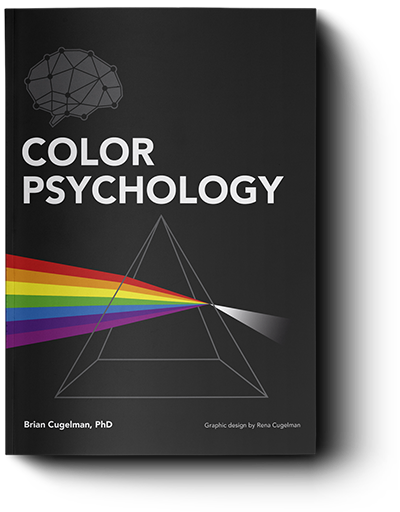In this update, I cover one of the core theories on how we use color for behavioral design.Below, you’ll find 7-principles of color psychology.
These insights, drawn from my extension of color in context theory, offer insight for designers, psychologists, and anyone curious about the links between color and human psychology.
1. Color meanings are associations:
We form associations between colors and concepts based on what we’ve been taught, and possibly human instinct. For example, if people frequently see blue in medical contexts, they might start associating blue with health companies.
2. Color associations trigger automatic responses:
Colors can evoke emotional responses due to the meanings we attribute to them. For instance, red candlesticks in the stock market symbolize financial loss. Therefore, a large red candlestick can instantly signal a financial meltdown, causing emotional shock. Conversely, a large green candlestick can evoke extreme optimism, all occurring in a fraction of a second.
3. Emotional coloring:
While colors can influence our emotions, our emotions can also shape how we perceive colors. People with depression often use more grey filters on Instagram, and when depressed, they may struggle to distinguish shades of grey.
4. Color meanings are contextual:
The meanings and emotional associations of colors depend on the context, meaning color strategies are only effective in certain scenarios. For example, red and green candlesticks might indicate winning or losing money in the stock market, signify Christmas in a holiday setting, or represent stop-and-go in traffic situations.
5. Light influences human biology:
Wavelengths of electromagnetic energy (light) have direct effects on human physiology, which can be utilized in behavioral design through patterns that control human attention and alertness, and in products that directly change our physiology.
6. Humans synchronize with celestial light cycles:
Light from celestial cycles (annual, lunar, daily) influences the brightness and color temperature of the atmosphere and biosphere, forming contextual associations with our seasons. Color temperature, separate from the hue spectrum, affects human psychology in specific ways.
7. Facial hues shape color-emotion associations:
The distinct color patterns of human faces contribute to universal associations between hue and emotion. Human health, illness, reproduction, and social emotions are all conveyed through specific facial color patterns, partially explaining our linkage of colors to emotions.
———————-
Original theory by Elliot & Maier, 2012. Simplified and updated by Cugelman, 2023. I’ll add the full list of citations as I come closer to publishing my upcoming book.


